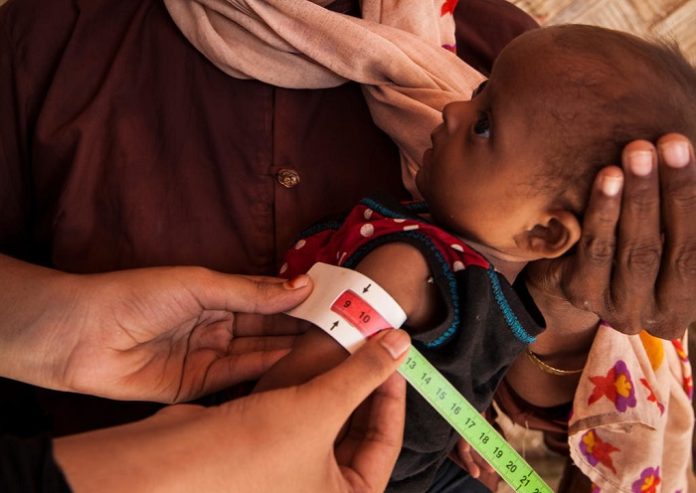
Preliminary data from a nutrition assessment conducted last week at Kutupalong refugee camp in Cox’s Bazar, Bangladesh, shows a 7.5 per cent prevalence of life-threatening severe acute malnutrition – a rate double that seen among Rohingya child refugees in May 2017, UNICEF said today.
“The Rohingya children in the camp – who have survived horrors in Myanmar’s northern Rakhine State and a dangerous journey here – are already caught up in a catastrophe,” said UNICEF Bangladesh Representative Edouard Beigbeder. “Those with severe malnutrition are now at risk of dying from an entirely preventable and treatable cause.”

Malnutrition rates among children in northern Rakhine were already above emergency thresholds. The condition of these children has further deteriorated due to the long journey across the border and the conditions in the camps. Around 26,000 people who live in the Kutupalong camp face acute shortage of food and water, unsanitary conditions and high rates of diarrhoea and respiratory infections. Cases of measles have been reported.
The Kutupalong nutrition assessment, conducted between October 22 and 28, surveyed 405 households including families who arrived there both before and after violence escalated in northern Rakhine on August 25.
Two additional assessments are planned in other sites in November, including one at a makeshift settlement. The findings from the three assessments will update the projected number of children expected to suffer severe acute malnutrition over the next few months, and guide the emergency response.
UNICEF and partners are treating over 2,000 acutely malnourished children at 15 treatment centres, with six additional centres currently being set up. UNICEF is also working with health partners to identify and treat diarrhoea and pneumonia, and will be conducting mass vaccination and nutrition screening campaigns this month.
“The humanitarian community needs to be able to do far more to treat and protect these extremely vulnerable children,” Beigbeder said. “For that we need far more attention to the crisis, and far more resources for the response. These children need help right now.”

